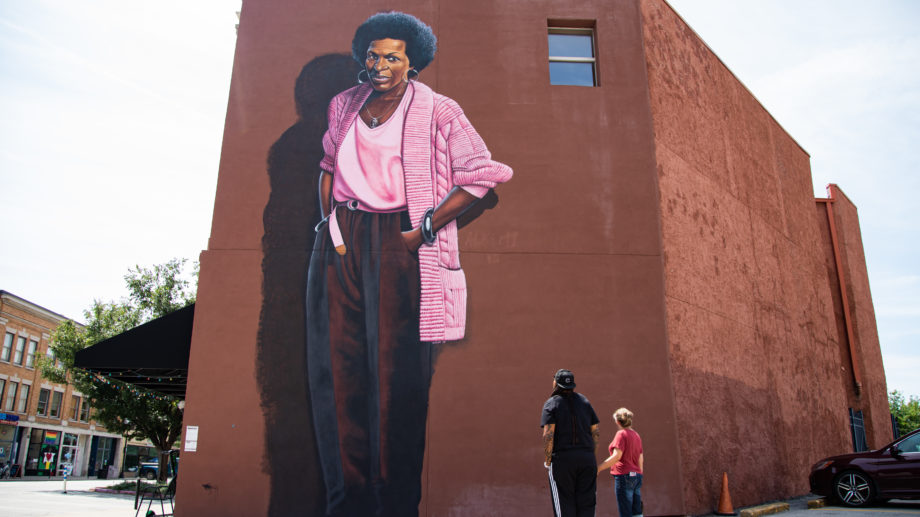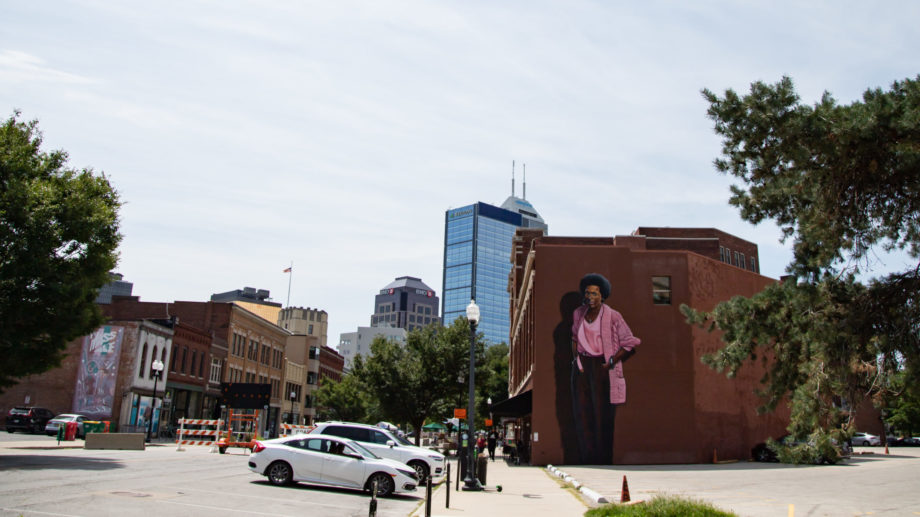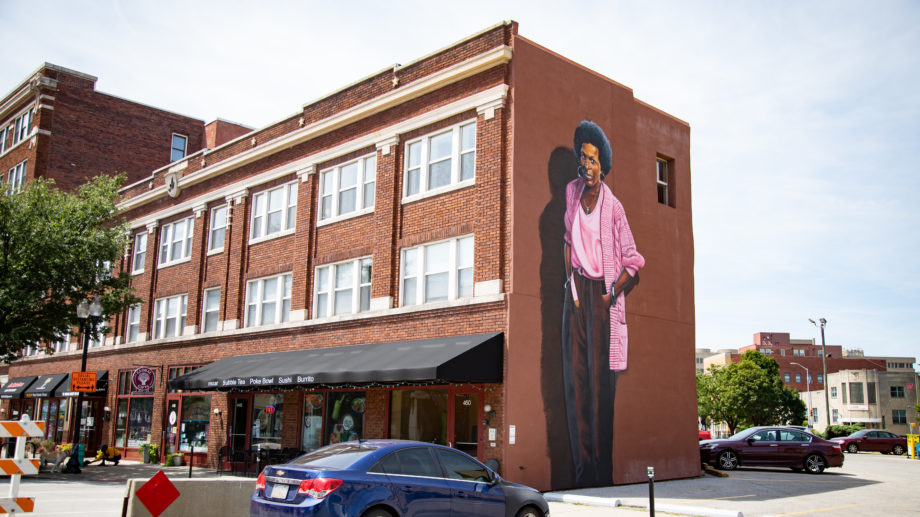Mari Evans Mural39.773757, -86.151427
Indianapolis honors Black Arts Movement pioneer author Mari Evans with a larger-than-life mural painted by artist Michael Jordan, aka ALKEMI, and curated by Big Car Collective.
Author
Mari Evans
b. 1919 – d. 2017
Literary Inspiration
“I Am a Black Woman”
Published 1970
NOTES
Dig
Deeper
mari evans muraL
448 Massachusetts Avenue
Indianapolis, IN 46204
Closest IndyGo Stops:
Mass Avenue & New Jersey Street (Route 38)
Delaware Street & New York Street (Routes 2, 3, 4, 5, 10, 38)
How to Plan a Trip on IndyGo:
- Use the Trip Planner on IndyGo.net
- Use Google Maps (select “transit” as your travel method)
- Call IndyGo Customer Service at 317-635-3344
- Track your bus using the MyStop Mobile App
You can visit a video exhibit titled, The Legacy of Mari Evans, in concourse A at the Indianapolis International Airport. The new digital art exhibit will include highlights of Evans’ life and legacy in Indy as well as excerpts from her poems.
This video shows the artist Michael “Alkemi” Jordan putting some of the final touches on the Mari Evans mural on Mass Ave. The mural and the artist both smile down at the onlookers who have gathered to marvel at the painting and to take pictures with Evans herself, who’s on location. The video also features Evans reading one of her poems, which celebrates two people joining together in love, not as half-beings who complete each other but as two whole people who complement each other.
Mari Evans helped shape the Black Arts Movement and inspired countless marginalized people to embrace their own identity. This Indianapolis Star article details Evans’s recognition with an Indiana Authors Award lifetime achievement award and some of her remarkable contributions to art, social work and the world as a whole.
Mari Evans seldom agreed to do interviews, instead preferring for her poetry and her writing to speak for her. But she made an exception when she received the Indiana Authors Award lifetime achievement award, agreeing to be interviewed on film as part of the celebration. In the recorded conversation she identifies herself as a political writer looking at the world “through a Black lens.” The video also includes clips of her television series, The Black Experience, which aired in the late 1960s and early 1970s. Evans created the series to offer her political insight into what was happening to Black communities in America, which she called “our family nation.”
Here is a link to another rare interview with Mari Evans, in which her keen self-knowledge is on full display. She touches on her time as an advocate for inmates and calls herself a private investigator, learning all she can about the city of Indianapolis and what has happened behind the scenes that others may not have known about. Evans measures her responses carefully, ever-mindful of the “sound” she wishes to “leave behind” her.





















